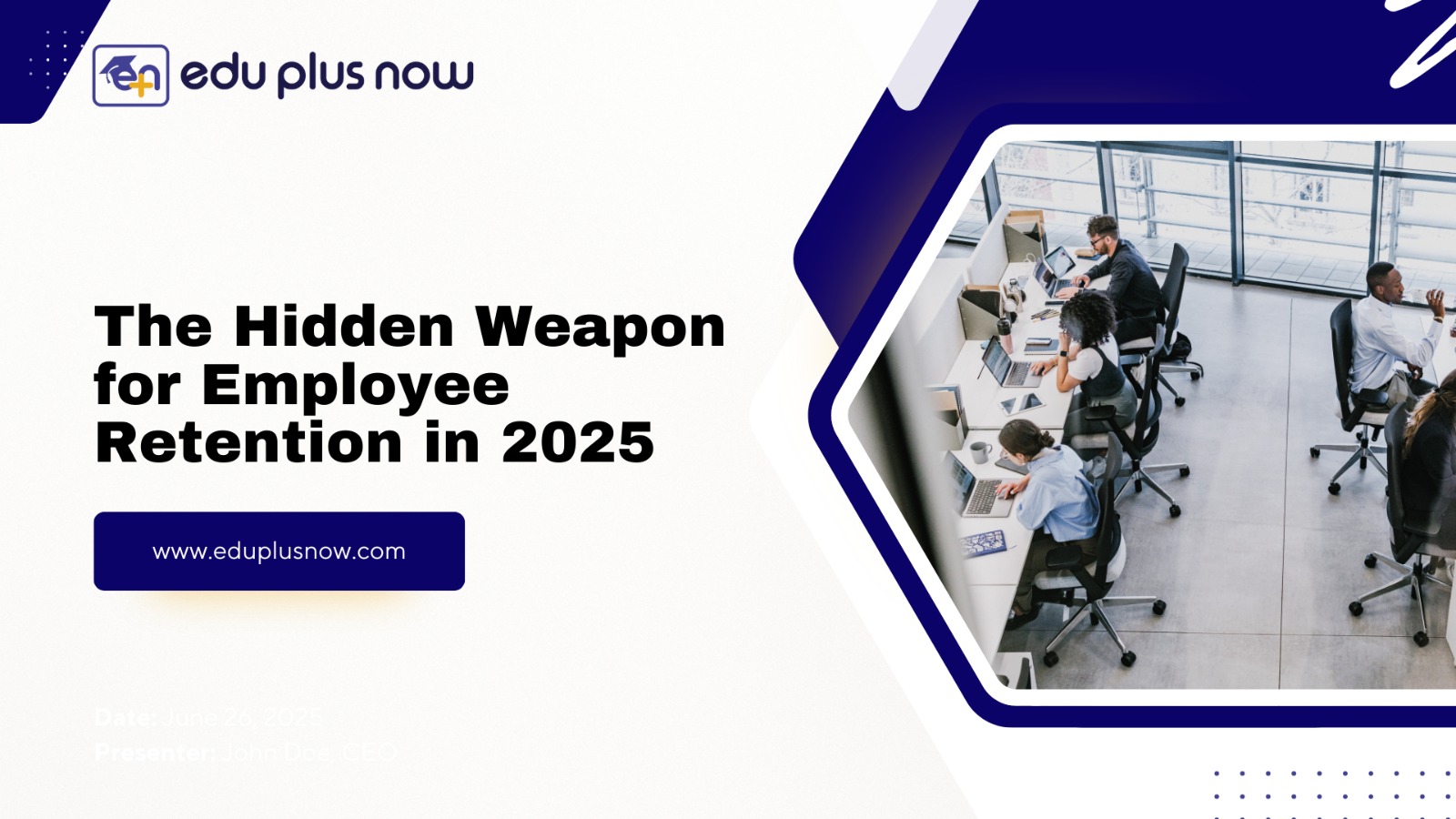These days, an even more complex and advanced work environment competes for your best employees using a variety of tactics and retention tactics. It is obvious that progressive businesses are focusing on retaining their workforce by helping people develop new skills and sharpen their current ones. In fact, one of the requirements for attaining economic success in 2025 and beyond is “upskilling.”
Why Upskilling Matters?
You can “upskill” your present staff by having them learn new talents rather than “hiring” a new hire with the requisite abilities. Upskilling is a direct investment, and the expense will surely be justified if employees receive high-quality training. Hence, in this blog we are going to cover Why Upskilling Matters for business growth.
These techniques can also be applied to enhance previous abilities:
- Teaching technical skills like technical analysis or coding
- Developing soft skills like communication or leadership
- Instruction in New Software and Tools
- Teaching about the trends in the industry
The Reason of Workers’ Leaving from Companies
Before we address the benefits of upskilling, let’s discuss the reasons why people leave their occupations.
“They feel restricted.”
Employees begin looking for opportunities elsewhere if they believe that their careers are stagnant. Their abilities grow outdated. Rapid changes in some industries, such as technology, over time affect some talents less applicable. Better compensation is what they would prefer. People know that switching careers almost always results in a higher salary than staying in one’s current one.
They’re bored. Even the most gifted individuals become indifferent when they perform the same duties over and over again. Insufficient gratitude. When businesses fail to foster their progress, employees feel undervalued and are treated like any other machine.
How Retention Issues Are Helped by Upskilling
Is concerned about the development of employees:
Investing in training is more than just money; it’s a way for a corporation to say, “We want you. We see you developing alongside us. It’s an extremely strong bond. Even if they are offered a better salary elsewhere, employees are more likely to stay with such organizations because they value them. This shows the potential influence of investing in staff development on employee retention, as do the previously mentioned statistics.
Internal Growth Opportunities Through Upskilling:
A primary reason employees leave is to seek better roles and new opportunities. Upskilling initiatives allow employees to advance within the company, eliminating the need to look externally for career progression.
For instance, a customer care representative trained in data analysis can move into a business intelligence position. This internal transition is a more effective solution than terminating the employee and hiring external candidates to fill the resulting vacancies.
It Preserves Skills Relevant and Up-to-Date:
Industry-specific technological developments and practices are changing at a startling rate. Employees will worry about their career prospects and value to the organization if their talents become less relevant. Regular training guarantees that the team’s skills are not considered outdated and speeds up the process of updating the team’s collective talents.
It Boosts Contentment at Work:
Gaining new knowledge is gratifying in and of itself. Breaking monotony makes workers feel more interested and involved. Employees are more motivated to work harder when faced with fresh obstacles. As a result, total job satisfaction rises as the company continues to grow and overcome new challenges. A person’s satisfaction at work is also significantly increased by the sense of accomplishment that comes with learning new abilities. Enhanced Job Satisfaction Through Upskilling
Acquiring new skills is inherently rewarding and combats workplace monotony, leading to increased employee engagement and interest. Facing new challenges motivates employees to exert greater effort. Consequently, overall job satisfaction improves as the company progresses and tackles new hurdles. The feeling of accomplishment derived from mastering new abilities also significantly contributes to a more satisfied workforce.
It may be less expensive than hiring a new employee:
It is expensive to participate in the hiring process for new staff. Recruiting, interviewing, and onboarding are the first costs, and when the new hire becomes a part of the team, productivity declines. On the other hand, educating an existing employee who is familiar with the company’s procedures and culture is quicker and less expensive than recruiting a third party.
Actual Success Storieswhich Shows Why Upskilling Matters —
Tech Firm Reduces Employee Turnover by 25%
A mid-sized software firm wanted to do more than just raise compensation after they experienced difficulties with developers losing out to other software companies. They provided a way for engineers to dedicate 20% of their time to learning new technologies and languages. It was successful, and after a year, their turnover rate decreased by 25%.
Within retail chains, internal candidates fill 80% of management jobs. For a large retail chain, store manager turnover was an issue. They started a leadership development program for salespeople and cashiers. Within two years, 80% of their management jobs were filled internally, and those managers remained on the company longer than those who were hired from outside.
How to Start an Effective Upskilling Program
1.Identify the Skills Needed
Find out what your employees want to know, discuss on why upskilling matters & Take into account your company’s future needs as well. The sweet spot is the intersection of these two areas. Training should not be given carelessly. Provide employees with clear pathways that show them how gaining specific abilities can advance them into assigned responsibilities.
2. Make Learning Accessible
Offer a variety of choices.
Courses offered online that are accessible at any time
Workshops held in person to cultivate various skill sets
Mentoring programs to gain knowledge from an experienced individual
It is possible to fit learning time into working hours.
3. Acknowledge and Honor Progress
Employees should be given the opportunity to use newly acquired skills. This could entail taking on new tasks, participating in new initiatives, or even getting promoted. Managers must also engage in learning and development. When managers inform employees about the new skills they are acquiring and the enhancements they are achieving, it will promote skill advancement.
The main point: Upskilling is an asset, not an expense.
After examining the figures, enhancing skills yields benefits:
- The immediate expense of replacing a worker can range from 1.5 to 2 times their yearly salary.
- Trained employees boost productivity by 15% to 20%.
- Organizations with a robust culture of learning and development experience retention rates that are 30% to 50% greater.
Beyond the figures, there is a human aspect; individuals seek to grow, improve, and face challenges. Organizations that acknowledge and fulfill this fundamental human requirement will consistently have a competitive edge in keeping their top talent.
Summary: Why Upskilling Matters
The employment market remains competitive as we move through 2025. Multiple choices exist for exceptional talent. Incorporating upskilling into your culture will not only develop a more skilled workforce but also foster a workplace where people desire to remain.
The most effective companies recognize a basic fact: by supporting employee development, they enhance the growth of their business. This is mutually beneficial; upskilling serves as your hidden advantage to keep your talent—exactly where you desire them: with your team.
Ready to future-proof your workforce?
Explore our corporate upskilling programs at Corporate Plus by edu plus now





